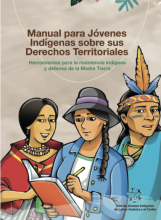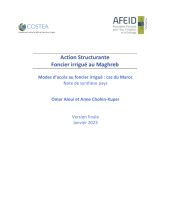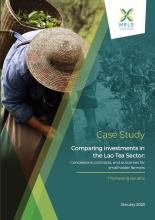Land Library
Welcome to the Land Portal Library. Explore our vast collection of open-access resources (over 74,000) including reports, journal articles, research papers, peer-reviewed publications, legal documents, videos and much more.
/ library resources
Showing items 46 through 54 of 1724.Diante de uma nova onda de garimpo nas áreas protegidas da bacia do Xingu, que se intensificou a partir de 2019, a Rede Xingu+ divulgou em 2020 um dossiê detalhando os principais focos de exploração garimpeira na região e que colocavam em risco, somada à epidemia de Covid 19, vár
This guide aims to help investors identify the impacts and mitigation measures to minimize the impacts of the proposed investments in the agricultural and forestry sector in Laos.
With around 7.4 million inhabitants, Laos is relatively sparsely populated. Over 70% of Laotians depend directly or indirectly on agriculture and forestry for their living.
El “Manual para Jóvenes Indígenas sobre sus Derechos Territoriales: Herramientas para la resistencia indígena y defensa de la Madre Tierra” fue creado por jóvenes indígenas, para jóvenes indígenas y no indígenas.
Les études et recherches récentes sur l’accès au foncier irrigué au Maghreb font référence à la privatisation des terres, à l’individualisation des droits ou encore à l’accaparement ou la concentration foncière.
Au Maroc, les politiques foncières post indépendance de 1956 ont abouti dans la zone occupée par la France à la mise sous tutelle d’une partie du foncier récupéré de la colonisation officielle et privée (DPE), au maintien du régime des terres collectives codifié dès 1919 par les autorités colonia
La responsabilisation des communautés locales dans la gestion du foncier agricole, gage de paix et de cohésion sociale, est nécessaire.
Most tea in Laos is produced by smallholder farmers, who benefit from highly suitable growing conditions and strong demand for sought-after varieties from the vast Chinese market. However, the sector faces many challenges to achieve its full potential.
Au Cameroun, l’augmentation des investissements à grande échelle, dans des secteurs tels que l’agro-industrie, l’exploitation minière et forestière, a entraîné de nombreux transferts de droits fonciers des communautés locales vers les acteurs commerciaux.









